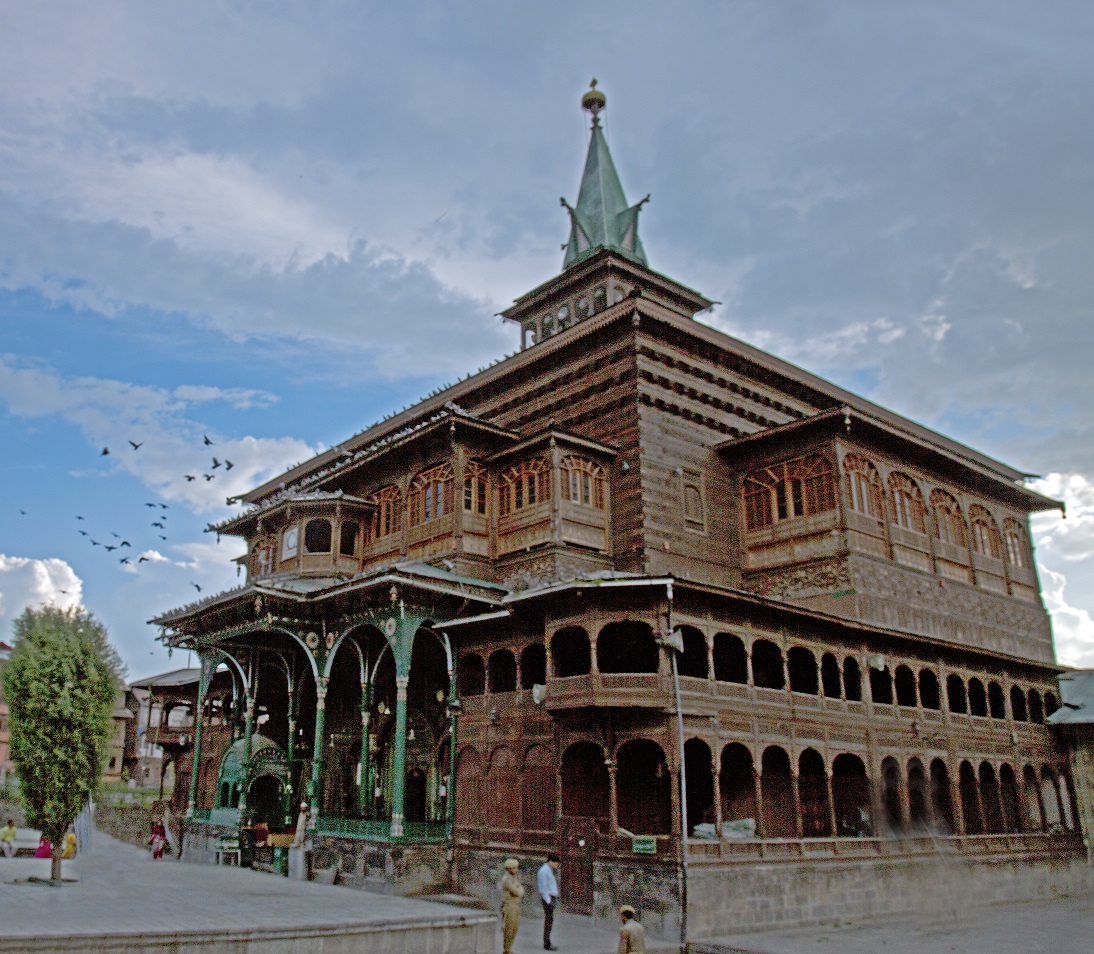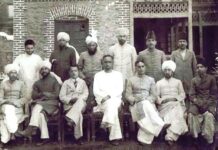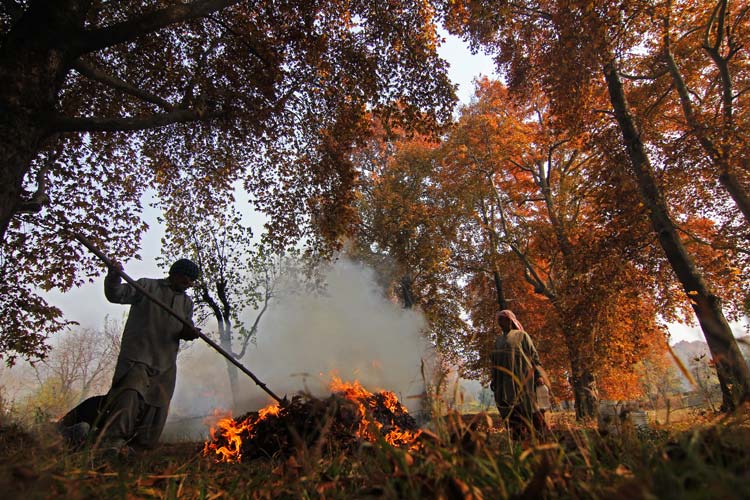Within decades of their rule when Muslims were still a minority, Shahmiri Sultans took the advice of their spiritual leaders seriously and implemented Shariah, writes Sara Wani

At the time Shahmirs’ were trying to revive Kashmir after a long chaotic Hindu rule, Central Asia, Kashmir’s key trading partner was changing. The last nomad conqueror Timur, referred to as Timurlane (1330-1405) by Western historians for his right-leg deformity, was a Samarkand sensation who had taken the region like a storm.
A Muslim considered to be an art lover, Timur was an opportunist who used Islam to legitimize his conquests. He had picked a battle with the clergy, which had triggered demographic upheavals in the region.
In those tumultuous years, Kashmir was ruled by Shirashamik, who had assumed the name of Shuhabuddin when he succeeded his father in 1354. Having an unblemished character, Shuhabuddin initially engaged himself in restoring order for which he gave capital punishment to various rebelling chieftains. “It was after he had assured himself that there would be no trouble in the valley during his absence that he set out to conquer the neighbouring territories,” historian Mohibbul Hassan records in his Kashmir Under The Sultans. But his conquests were exaggerated and were limited to small states bordering Kashmir.
Although Kashmir was now under Muslim rule for over 30 years, it appears that there was no religious intolerance on the part of the king. The court was adorned with Hindu commanders, ministers and high officials. Udyashri was his Chief and Finance Minister, according to Tarikh-e-Hassan. Kota Bhatta was his minister and Malik Candra, Sura Lolaka and Acal Raina were his three military commanders.
Lakshmi, a Hindu, was his favourite queen. In her memory, Shuhabuddin built a town on the Hari Parbat foothills.
In his Rajatarangini, Jonaraja says that Shuhabuddin was so tolerant that when Udyashri suggested the melting of a brass image of Buddha for coinage, Sultan replied: “Past generations have set up images to obtain fame and earn merit, and you propose to demolish them? How great is the enormity of the deed.”
“He is also said to have erected many mosques and monasteries,” Mohibbul Hassan says. Quoting Nawadirul Akhbar of Aba Rafiuddin Ahmad, Hassan has recorded: “He was, however, a patron of learned men and opened a number of schools where the Quran, Hadis and Fiqh were taught.”
M Ishaq Khan in Kashmir’s Transition to Islam maintains that Sultan built schools of Islamic learning “because of his association with two Sufis of the Kubrawi order”, Sayyid Tajjuddin and Sayyid Husain Simnani. The two were deputed by Amir-e-Kabir, Mir Syed Ali Hamadani.
“The first to enter Srinagar was Tajuddin who was given a warm welcome by Sultan,” writes Khan. “But Syed Hussain Simnani joined his brother in 775 AH after staying in India. The Sultan also received Simnani cordially and helped him through a state grant to maintain a kitchen at Kulgam.”
Unlike Khan, most other historians believe that the two brothers were sent on a fact finding mission by their cousin, the Amir-e-Kabir. G M D Sufi, in his Kashir: Being A History of Kashmir says the motive was to “survey the field for the propagation of Islam and also to find means of escape from Timur, who was suspected of contemplating, from political motives, the massacre of this powerful Sayyid family.”
Simnani was the same Muslim preacher, according to Khan, who converted Noordudin Noornani’s father Salat Sanz to Islam.
Whether his two cousins reported back to Amir-e-Kabir or sent their two disciples Sayyid Masuad and Sayyid Yusuf back to Bukhara is unknown. What is known, according to Mohibul Hassan is that he came to Kashmir. “Sayyid Ali arrived for the first time in Kashmir in September 1372,” Mohibul Hassan says. “After a stay of four months, he proceeded to Mecca on a pilgrimage and thence returned to Hamadan.”
When Amir-e-Kabir arrived, Sultan was out and his brother and successor Qutubuddin received him. On his way to Haj, certain histories suggest Sayyid Ali brokered peace between the Sultans of Delhi and Kashmir who were fighting. But Mohibul Hassan rejects it and terms it a legend.
By the time, Amir-e-Kabir arrived on his second visit in 1379; Qutubbuddin (real name Hindal) had succeeded his brother. He was facing a serious crisis from the officialdom that he inherited. Despite his queen Sura Rani mediating to settle Sultan’s issues with Udayasri, Qutubbuddin eventually executed him. He also killed Lolaka in a battle. Even he had to imprison his nephew Hasan.
After staying in Kashmir for two and a half years, he returned to Turkistan. His third and last visit was in 1383. “The third visit of Sayyid Ali was caused by the third invasion of Persia by Timur in 1383 when he conquered Iraq and decided to exterminate the Alavi Sayyids of Hamadan, who, until his time had played an important part in local affairs,” records Mohibul Hasan. “Sayyid Ali, therefore left Hamadan with 700 Sayyids, and set out towards Kashmir where he expected to be safe from the wrath of Timur.”
Qutubuddin received him and brought the caravan to the city. Operating from Alauddinpora, there Sultan constructed a Suffa for them for prayers, where he would also join.
Muslims in Kashmir were still a minority. Sultan and his courtiers were still wearing traditional Hindu dresses and following Hindu traditions. This led Amir-e-Kabir’s intervention, on whose suggestion Sultan changed his wardrobe. Sultan had two sisters in his herm and he divorced both and then remarried the younger of the two. He would visit a temple in Alauudinpora with Hindus and perform yagnas.
“Qutubuddin did not follow every advice of Sayyid, but he held him in great reverence and visited him every day,” Muhibul Hasan records the relationship between the Sultan and the Pir. “Sayyid Ali gave him a cap which, out of respect, the Sultan always wore under his crown.”
During his stays in Kashmir, Amir-e-Kabir has preached Islam and is credited for mass conversions. During his stay, he is said to have converted 37000 Hindus to Islam. Fouq’s Tarikh-e-Kashmir and J L Kilam in his History of Kashmir Pandits insist that once three kharwars (six mounds) of scared Hindu thread (Janeu) were burnt after a mass conversion event. Even some miracles are attributed to him. While all historical records suggest his preaching of Islam within and outside the court, no credible history has recorded a miracle. New converts, however, converted the temples into mosques.
Almost all historians including Hassan ibn Ali, Malik Hyder Chadoora emphatically state that Mir Ali Hamadani was keen that Sultan should implement the Shariah.
“…if to be a Muslim is to have the righteousness of the prophet’s followers of the first age, then even a pagan and a fire-worshipper will feel ashamed of our sins,” Amir-e-Kabir wrote in a letter to Sultan. “Even the Jews will not consider the wavering and weak belief of the present day Muslims worth anything.” Amir tells the king the “surprising” thing that “Muslims are running away from the truth path…”
Amir concludes his letter with this paragraph: “Out of sheer love, I advise you that the worldly glamour is like a fast wind and the worldly favour is like an unfulfilled dream; he alone is wise who neither gets fascinated by dreams nor feels proud of any notion but learns a lesson from the experiences of bygone people, believing firmly in the axiom that: one who does not learn the examples of others, himself becomes an example of other.”
In the 1384 fall, Sayyid Ali left against the wishes of his host. He, however, left Maulana Mohammad Balkhi alias Mir Haji Mohammad to guide the Court. Near Kunar, he passed away on January 19, 1385. He lays buried in Khatlan.

In very old age, Qutubuddin fathered two sons Sikandar and Haibat. When they were orphaned in 1389, both were minors. Though Sikandar succeeded him but the state was controlled by the Queen Regent Sura (Haura Khatun). Somehow, securing throne, she had to execute her daughter and son-in-law for conspiracy. By the time Sikandar took over, his enemies had poisoned Haibat.
Things began changing rapidly later. After managing the disorder that erupted after his father’s death, he undertook a military expedition to reclaim the areas that had claimed autonomy. He had two wives Mira and Sobha Devi.
In 1393, five years ahead of Timur’s Delhi takeover, Syed Mir Mohammad Hamadani, arrived in Kashmir with 300 Sayyids. Sikandar received them well. Together with Suhabhatta, Sikandar’s prime minister and army chief, Amir-e-Kabir’s son made the era interesting. Suhabhatta converted to Islam and became Malik Saifuddin. He gave his daughter Bibi Baria (buried in Kotar, Kralpora) in marriage to the preacher.
Mir Mohammad was young and impressive. Jonanaraja describes him as “the bright moon….among the stars” for his qualities of mind and heart.
Even the Sultan was different. “..he abstained from wine and other intoxicants, and that on religious grounds he did not listen to music,” Muhibul Hasan describes Sikanadar. “He appears to have been a man of puritan temperament, and banned all the gay celebrations which were so common a feature of the reign of Sultans.”
It was apparently the insistence of Mir and Suhabhatta that Sikandar implemented Sharia in Kashmir. He established the institution of Sheikh-ul-Islam to oversee the implementation of Sharia in his kingdom. He banned gambling, wine, playing of string music and dancing, besides, imposing Jaziya on non-Muslim which were forming still the majority of the subjects. He prohibited sati and application of tilak.
“The new converts came to be looked down upon by their old compatriots as the people with no decency or loyalty for the time-bound values,” writes Kilam.

Throughout history, Sikandar has been projected as an iconoclast, the man who destroyed hundreds of temples, forcing an exodus of Hindus and forcible conversions. But people defending him suggest that Sikandar ruled much lesser than 24 years because he was a minor when his father died. They attribute the entire baggage to Suhabhatta.
Suhabhatta had his own axe to grind. Once he had fallen ill and Hindu Ved’s failed to cure him. Then a Bukhara Sayyid prescribed him mutton and beef soup, which he took, after being permitted by the clergy. But this incident blocked his daughter’s marriage prospect as no Hindu accepted her for their household was presumed polluted. Enraged Suhabhatta converted and married his daughter to Mir.
“The Chief person who prevailed upon Sikandar to adopt an intolerant attitude towards the non-Muslims was Saifuddin, who was in this respect his evil genius,” Muhibul Hasan writes. “The Sultan at first resisted him but in the end gave in and allowed himself to be used as an instrument of his minister’s religious fanaticism.”
The clergy was not supportive. “The saint Sayyid Mohammad, on being appraised, told the king that all that was done either at his bidding or through his connivance was not sanctioned by Islam,” G M D Sufi wrote. “These words so impressed the Sultan that he at once put an end to these activities.” Kashmir, however, remembered him – Suhyar Masjid, Suhyarbal and Suhyar Mohalla around Ali Kadal keep his memory green, writes G M D Sufi.
The “iconoclast” Sikandar, however, built Jamia Masjid in Nowhatta with the help of Sadruddin Khurasani, its architect. He built all the four Khanqah’s in Srinagar (1396-97), Tral, Sopore and Vachi.
Later Shahmirs’ did everything they could to undo what happened in Sikandar era. By the time Sikandar died in 1413, Kashmir was back to normal. Kashmir’s medieval era normality was briefly described by Amir-e-Kabir in his letter to Moulana Muhammad Khawarazim, who had accompanied him to Kashmir but had stayed put. “But it is really surprising that how can one ever live peacefully in the land of infidels or feel contended where the wicked flourish and are provided support?”
(This is the last of the four part series on advent of Islam in Kashmir. Read the third part of the series Hindu Subjects, Muslim Rulers here)















